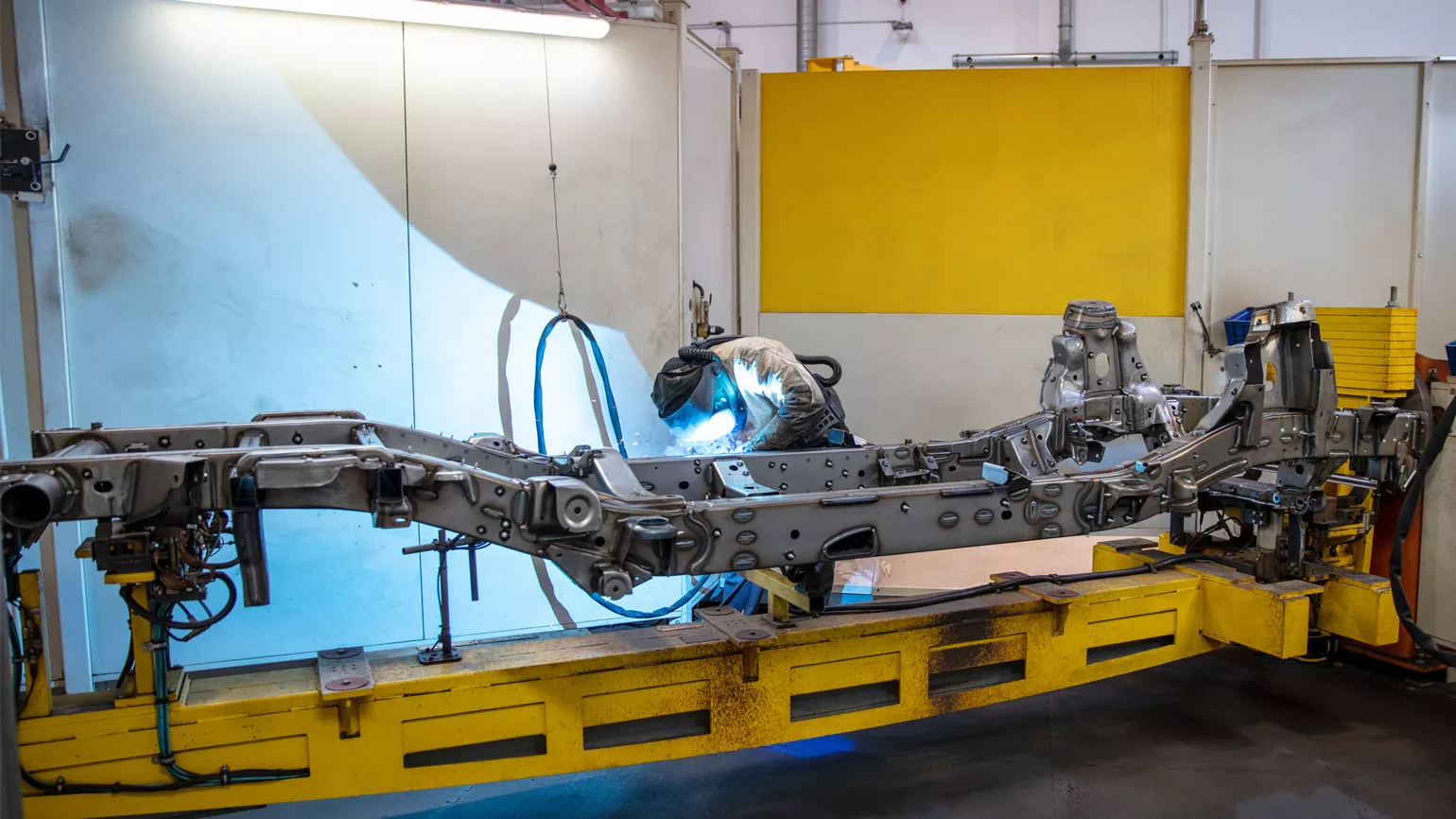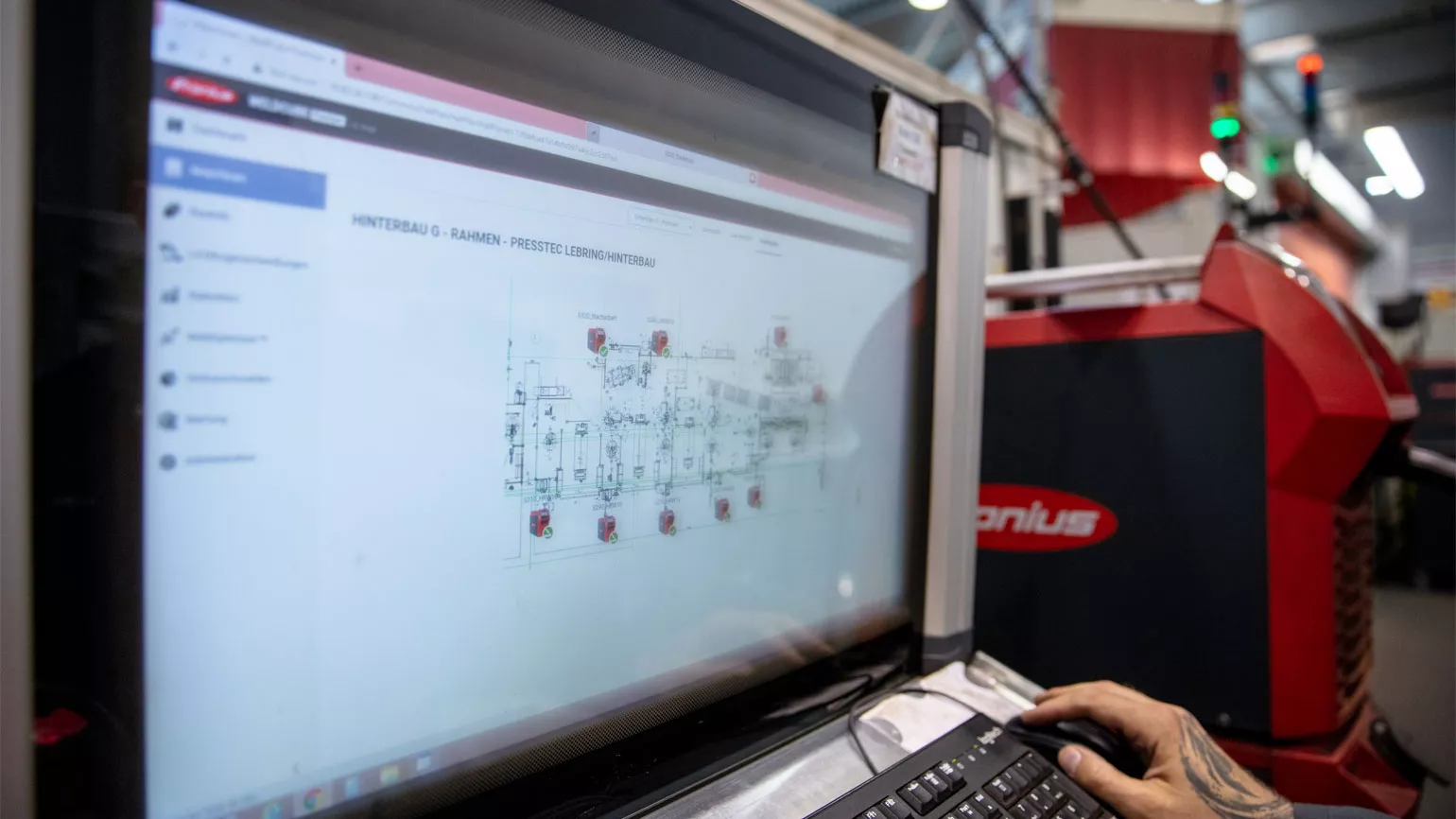Automotive future at Magna Presstec

Automotive supplier Magna has built up the perfect production infrastructure around the town of Graz: Magna Presstec GmbH in Lebring – half an hour's drive to the south-east of Graz – produces the basis of the G model. Magna Steyr Fahrzeugtechnik AG & Co KG in Graz then completes the premium offroader.
Essence of the automotive high flyer
“Globally, the Magna concern has around 158,000 employees; Magna Presstec is part of the COSMA (Body and Chassis) group of companies”, explained Kurt Hartmann, manager of the Quality Assurance and Welding Supervision division for frame production of the Mercedes G range. Presstec itself has a workforce of approximately 1200, divided between its sites at Weiz and Lebring in Austria and Bratislava in Slovakia.
The automotive sub-supplier produces high-quality chassis and structural components made from aluminum and steel. “Our customers include VW, Audi, BMW, Daimler and Porsche. We're pressing ahead to shape the future of the automotive sector – with passion and personal responsibility“, commented Hartmann.
High-tech offroaders demand highest levels of weld quality
The Mercedes G is one of the most capable all-terrain vehicles in the world, yet at the same time one of the most practical for everyday use. Its huge ground clearance and built-in deep wading capabilities drop a clear hint: the vehicle is designed to cope with the most extreme off-road conditions.
Pulling force and a long service life have to be guaranteed when the G is subjected to violent impacts at high speeds on rough terrain, such as during endurance testing over the steep slopes at Schöckl, near Graz. The vehicles are extensively tested on a spectacular mountain circuit, which shows why the construction of the frame for the G class demands so much care and attention. It's no surprise that the quality of the welds also has to be of the highest standard.
Mercedes G requirements on welding technology
“The steel we use is primarily in sheets 2-4 millimeters thick, which are joined together using 657 welds. The total weld length per frame is 76 meters. The biggest welding challenge for us is to build up the 4.2 meter long chassis frame layer by layer, while always remaining within the customer's specified tolerances and maintaining the required top level of quality,” emphasized Kurt Hartmann.
This placed varying requirements on the joining technology when tooling up the production line. To generate the urgently required stability in the solid frame, high arc stability with perfect penetration was essential. The stringent quality requirements also called for as little distortion as possible and controllable heat input. For productivity reasons, high weld speeds were also needed.
“The PMC (Pulse Multi Control) process from Fronius was able to totally satisfy our requirements”, noted Hartmann, who himself has plenty of international welding experience. “This meant we had to have the modular TPS 500i welding platform. Intuitive operation and the straightforward interface to the robot gave us precisely the package we needed. We've currently got 36 of these welding systems on the Mercedes G line. We also have some TPS 320i systems for any manual welding we need to do for quality control purposes.”
Autonomous quality production in detail
“We like to boast that every frame is identical to the next – it's all about eliminating any deviations”, explained Hartmann. The production line extends over more than 100 meters in a well-equipped hall. Autonomous to a large extent, it satisfies the highest standards. The perfectly coordinated robot systems work seamlessly together, enabling a rugged and perfectly assembled G frame made up of many individual parts to leave the hall every 10 minutes.
The production process takes places in three sections: the front and rear of the frame are produced at the same time. A team of workers starts by tooling up the welding units. Then, in the cells, the components are joined using welding robots. A handling robot picks up the completed components, transports them to the next cell and places them in position. At the end of each section is a cell to which the workers have no access. This is sometimes used for welding long welds, but also for cooling or as a complex station for squeezing, for example, which involves nesting the lower shells with the upper shells of the side members, moving them into position and welding them under pressure.
In the substructure – the final production section – the front end and rear end are brought together and the frame takes on its striking form. The final work steps consist of punching decoupled connecting points for the chassis. In addition, a drawn arc welding operation fires 192 studs into the frame. The quality of the welds is then checked, any welding spatter removed and the welds reworked as necessary. Finally, robot-controlled laser systems take precise measurements of the frame and check that it meets all the required quality criteria.
Ultra-professional welding data management
This extremely complicated procedure demonstrates that it's not just about welding at Magna Presstec. To be able to ensure the high degree of automation and high quality for the G line, the focus right from the outset was on the integration of monitoring and data analysis tools for welding processes. The automotive sub-supplier was looking to cooperate with joining specialists whose systems and solutions facilitated the total digital traceability of the welding processes.
With its WeldCube Premium software package, Fronius was for the first time able to install a comprehensive welding data management system in the production facilities of a Tier 1 supplier, and to demonstrate the benefits of the various software systems being used.
From quality assurance to predictive maintenance:
The WELDCUBE PREMIUM and CENTRAL USER MANAGEMENT software packages
“We've found the perfect partner in Fronius”, enthused Kurt Hartmann. “WeldCube Premium is an important pillar of our quality management system, as the complete traceability of every single weld is incredibly important to us.” Trained operators at the quality control stations are presented with the most accurate information on their terminals: Are there any dubious or real faulty welds? Locations picked out by Fronius WeldCube are subjected to a detailed visual inspection and reworked if necessary. Only then is the G frame released for the next stage in the process. The gathered data are then fed back to help optimize the automated welding processes.
WeldCube Premium charts every millimeter of the weld, making it a simple matter to analyze the cost of consumables such as gas and welding wire. Yet it has much more potential, for example Predictive Maintenance – the ability to order wearing parts and other materials in good time and in sufficient quantities.
“Predictive Maintenance with WeldCube Premium was able to uncover areas of potential savings, for example by having the welding management system specify precise maintenance intervals”, observed Hartmann. “We're always kept fully informed about the condition of contact tips, torch bodies, welding torches and wirefeeders, which means we know exactly when to service the equipment to avoid faulty welds, rework or the scrapping of components.”
Magna Presstec was already a user of the Fronius Central User Management (CENTRUM) system, which it uses in quality management. CENTRUM is where user and welding permissions are centrally managed. Welders use a smart card to identify themselves to the welding system, ensuring that only specially trained operators are allowed to work with the relevant parameters - another way of eliminating potential sources of error.
Magna Presstec has the proof: Welding data management works in the field
Christoph Pangerl, Fronius Key Account Manager for Magna, has no doubts: “The insights gained from the cooperation with Magna Presstec were extremely valuable, as we were able to feed them directly into our product development. It's also allowed us to make our software solutions accessible to a much broader customer base.” Kurt Hartmann continued the theme: “Welding data management in particular has helped us optimize our joining technology in every area. Fronius has given us a really powerful tool that has enormous potential. And with the technical support of Fronius specialists, we've meanwhile been able to deploy the system to improve our bottom line.“

